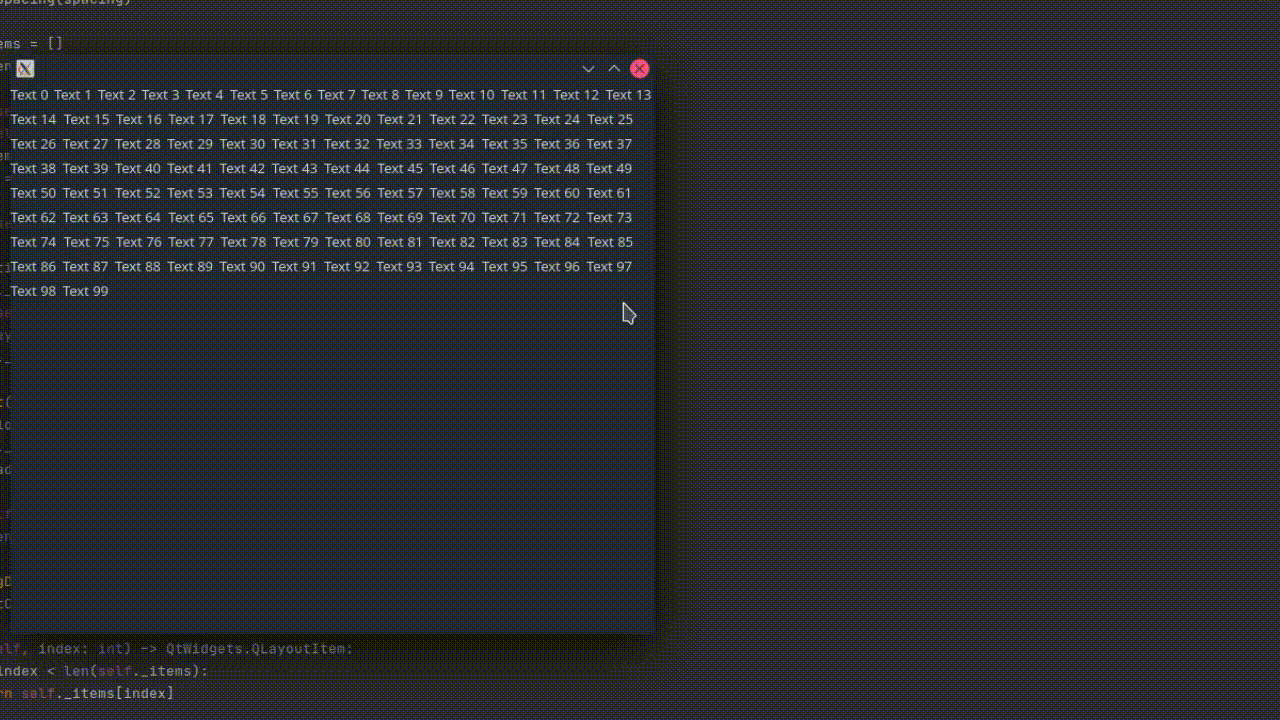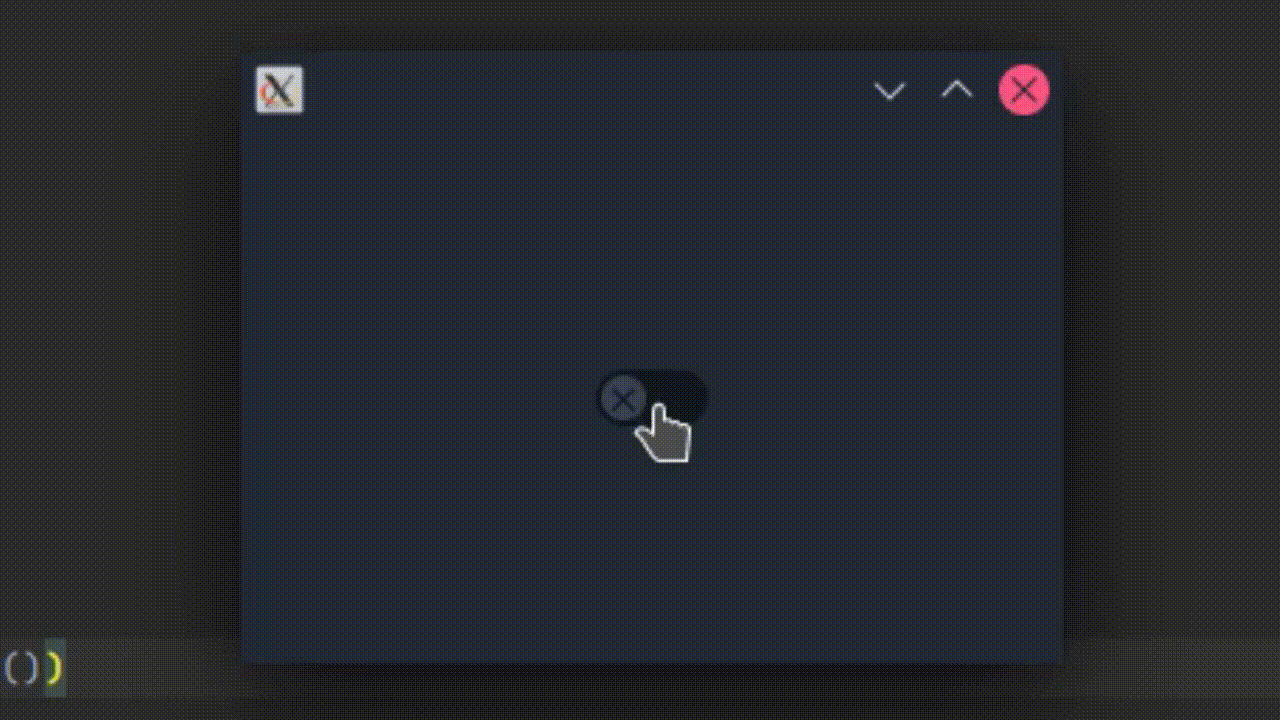# PyQt5-expansion
This is a collection of PyQt5 classes, which I'm using or I have used.
Because I use KDE Plasma, the look of the objects on your system may be different from the one in my [demonstrations](/assets)
- [QEmojiPicker](#QEmojiPicker)
- [QFlowLayout](#QFlowLayout)
- [QSwitch](#QSwitch)
- [QTagEdit](#QTagEdit)
## QEmojiPicker
A resizable widget which let you choose from various emojis.
NOTE: Not every emoji looks "nice" in PyQt5 so you may have to install a custom font
Demonstration

```python
from PyQt5 import QtWidgets # import pyqt5
from QCustomObjects import QEmojiPicker # import the emoji picker
if __name__ == '__main__':
# create a new app
app = QtWidgets.QApplication([])
# initializes the emoji picker
emoji_picker = QEmojiPicker(
# this option can say how many emojis are in a row
items_per_row=8,
# with this enabled, the emoji search will be faster but less accurate
performance_search=True
)
# this will open the emoji picker and return the selected emoji
print(emoji_picker.select())
```
## QFlowLayout
*Inspired from https://github.com/baoboa/pyqt5/blob/master/examples/layouts/flowlayout.py*
A hydrodynamic layout which rearranges the items in it dynamically if its resized
Demonstration

```python
from PyQt5 import QtWidgets # import pyqt5
from QCustomObjects import QFlowLayout # import the flow layout
if __name__ == '__main__':
# create a new app
app = QtWidgets.QApplication([])
widget = QtWidgets.QWidget()
# initializes the layout
layout = QFlowLayout()
# add 100 labels to see its resize function
for i in range(100):
layout.addWidget(QtWidgets.QLabel(f'Text {i}'))
# set the layout to the widget and show it
widget.setLayout(layout)
widget.show()
app.exec()
```
## QSwitch
*Inspired from https://stackoverflow.com/questions/14780517/toggle-switch-in-qt*
A simple toggle switch
Demonstration

```python
from PyQt5 import QtWidgets # import pyqt5
from QCustomObjects import QSwitch # import the switch
if __name__ == '__main__':
# create a new app
app = QtWidgets.QApplication([])
widget = QtWidgets.QWidget()
layout = QtWidgets.QHBoxLayout()
# initializes the switch
switch = QSwitch()
# add the switch to the layout
layout.addWidget(switch)
# set the layout to the widget and show it
widget.setLayout(layout)
widget.show()
app.exec()
```
# QTagEdit
A widget where you can create, delete and edit tags
Demonstration

```python
from PyQt5 import QtWidgets # import pyqt5
from QCustomObjects import QTagEdit # import the tag edit
if __name__ == '__main__':
# create a new app
app = QtWidgets.QApplication([])
# creates the tag edit
tag_edit = QTagEdit(
# here you can set some suggestion that will be shown if the user types in something
tag_suggestions=['tag 1' 'tag 2', 'tag 3']
)
# manually add a tag
tag_edit.addTag('a tag')
# manually remove a tag
tag_edit.removeTag('a tag')
# clear all tags
tag_edit.clear()
# clear all tags and add the given tag after this operation
tag_edit.setTags(['a tag', 'another tag'])
# sets the tag suggestions you can also define when initializing the class
tag_edit.setTagSuggestions(['1 tag', '2 tag', '3 tag'])
# if True, the user will be unable to define a tag with the same name twice
tag_edit.enableCheckForDoubles(True)
# if True, the tag suggestions will e shown
tag_edit.enableTagSuggestions(True)
# print all tags
print(tag_edit.tags())
# show the tag edit
tag_edit.show()
app.exec()
```
## License
This project is licensed under the GNU Lesser General Public License v3.0 (LGPL-3.0) - see the [LICENSE](LICENSE) file for more details.




